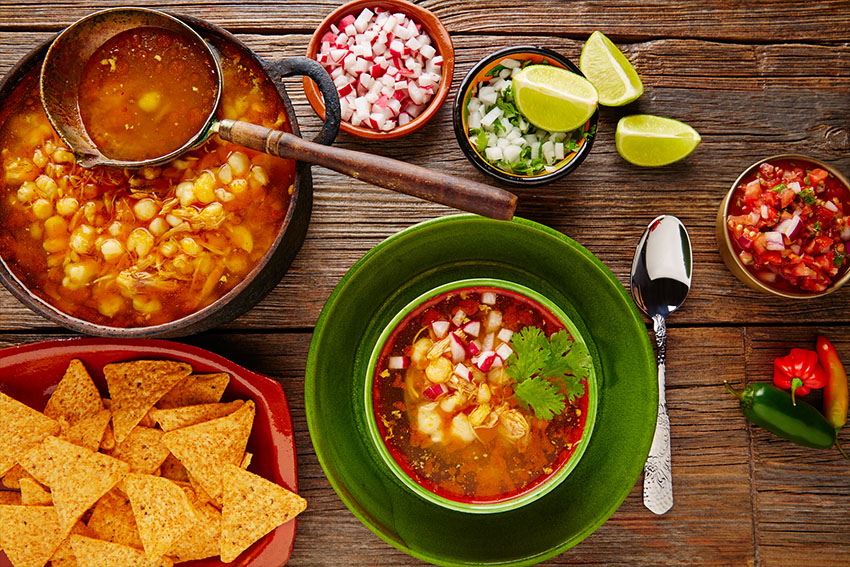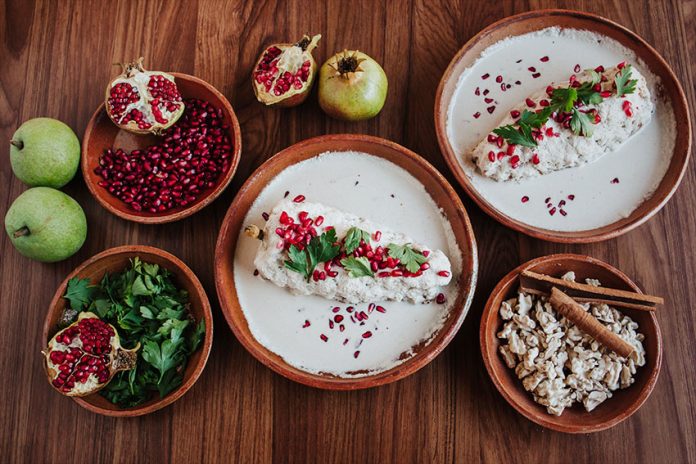Mexico celebrates Independence Day with fireworks, speeches, and flags, but most importantly food. Several dishes are iconic during the Independence Day season, so much so that they are often considered to be national culinary treasures, patriotic in their own right. Two of those iconic dishes are pozole and chiles en nogada.
Both dishes have interesting histories behind them, but chiles en nogada has a particular connection to the holiday. Two stories are told of its creation. The first legend is that nuns from Puebla’s Santa Monica convent decided to make a special dish to honor military hero Agustín de Iturbide and his Trigarante army after Iturbide signed the Cordoba Agreements, which led to Mexico’s independence from Spain. Using ingredients that were in season, in particular, the fresh walnuts in this part of the country, the nuns steamed, peeled, and cleaned poblano peppers. They stuffed the peppers with a mixture of ground meat, herbs, spices, seasonal fruits like apples, and nuts. Then the peppers were breaded and fried and covered in a creamy walnut and cheese sauce. Once sprinkled with ruby red pomegranate seeds and parsley, the final product had all the colors of the red, white and green Trigarante flag.
The dish’s other founding legend is that the girlfriends of three returning soldiers wanted to make their beaus a special dish for their return that would again, include the colors of the Trigarante flag. So the three women prayed to the Virgin of the Rosary and Saint Paschal Baylón for inspiration and chiles en nogada was the result.
Pozole dates back to a more ancient time in Mexico’s history. Some historians believe that this famous national dish — with dozens of varieties across the nation — was a specialty among the Mexica people, served to rulers like Moctezuma for special occasions. Spanish historian Bernardino de Sahagún recorded that this special stew was originally served with human flesh, the right thigh to be exact, and if he is to be believed, it was likely a ritual meant to absorb the power of the warrior king’s enemies. Nuño Beltrán de Guzmán, a Spanish conquistador also reported being served a similar dish with human flesh in it when he arrived in the city of Tonalá, Jalisco.

Over the years the dish has evolved into regional versions whose base can be ground pumpkin seed paste (pepián), pasilla or guajillo chile paste, and ground corn paste. All versions generally include hominy (nixtamal), shredded pork or chicken, as well as garlic and onion. The toppings added to pozole are endless — crunchy pork crackling, sliced radishes, cilantro, and lime jut to name a few. Both dishes are an integral part of the patriotic festivities and can be found gracing the tables of home cooks and high-end restaurants across Mexico throughout the month of September.
With reports from México Desconocido and Milenio
